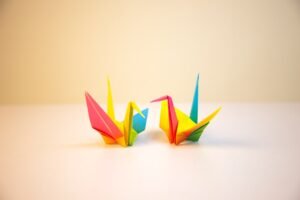Comprehensive Guide of Knitting
Overview
Knitting is a popular and rewarding hobby that involves creating fabric by interlocking loops of yarn using needles. This craft allows individuals to produce a wide range of items, including clothing, accessories, and home decor. Knitting can be done using various techniques, such as continental, English, and combination methods, each offering unique styles and results. The hobby promotes creativity, relaxation, and mindfulness, as it requires focus and attention to detail. Many knitters enjoy experimenting with different yarns, patterns, and stitches, making it a versatile and fulfilling pastime that can be enjoyed alone or in social settings.
History
The history of knitting dates back to the 5th century, with the earliest known knitted items originating from the Middle East. The craft spread throughout Europe during the Middle Ages, becoming particularly popular in countries like England and France. Knitting was initially a practical skill, used to create warm clothing and textiles for everyday use. By the 16th century, knitting guilds were established, and the craft began to be recognized as an art form. The Industrial Revolution brought about the invention of knitting machines, which increased production but also led to a decline in hand-knitting. However, the 20th century saw a resurgence of interest in knitting as a hobby, with the rise of craft movements and a focus on handmade goods. Today, knitting is celebrated for its artistic and therapeutic benefits, with a vibrant community of enthusiasts worldwide.
Popularity and Demographics
Knitting has gained immense popularity across various demographics, appealing to individuals of all ages and backgrounds. Recent surveys indicate that approximately 38 million people in the United States engage in knitting, with a significant portion being women aged 25 to 65. The hobby has also attracted younger generations, thanks in part to social media platforms like Instagram and Ravelry, where knitters can share their projects and connect with others. Knitting groups and clubs have emerged in communities, fostering social interaction and collaboration among enthusiasts. Additionally, the availability of online tutorials and resources has made knitting more accessible, encouraging newcomers to explore this creative outlet. The rise of eco-consciousness has also led to an increased interest in sustainable and natural yarns, further enhancing the appeal of knitting as a hobby.
Sponsored Hobbyists and Vendors
Become a Sponsor!
Affiliate Disclaimer: Throughout some sections below, Hobby Spotlight may suggest some tools, equipment or material using affiliate links. By purchasing any of those items, Hobby Spotlight may earn a small commission. This helps fund our website, content and services without directly charging our users.
Getting Started
Knitting Tools and Equipment:
Beginner
- Knitting Needles: Basic pair of straight knitting needles for beginners.
- Acrylic Yarn: Soft and easy-to-use yarn suitable for beginners.
- Yarn Bowl: A bowl to hold yarn and prevent tangling while knitting.
- Knitting Pattern Book: A book with simple patterns and instructions for beginners.
- Stitch Markers: Markers to help keep track of stitches and patterns.
Intermediate
- Circular Knitting Needles: Versatile needles for knitting in the round or flat.
- Wool Yarn: Higher quality yarn that is warm and durable for more advanced projects.
- Knitting Gauge Tool: A tool to measure stitch and row gauge for accurate sizing.
- Blocking Mats: Foam mats used for blocking finished knitted items to shape them.
- Cable Needles: Specialized needles for creating cable patterns in knitting.
Basic Requirements and Initial Setup:
- Knitting Needles: Choose the right size and material (wood, metal, or plastic) based on your project and personal comfort. Common sizes range from US 0 (2 mm) to US 17 (12 mm).
- Yarn: Select yarn based on fiber content (wool, cotton, acrylic) and weight (lace, fingering, worsted, bulky). The choice affects the texture and warmth of your finished piece.
- Pattern or Guide: A beginner-friendly pattern or instructional book can help you learn basic stitches and techniques, guiding you through your first projects.
Fundamental Skills to Learn:
- Cast On: The technique used to start your knitting project by creating the first row of stitches on the needle.
- Knit and Purl Stitches: The two fundamental stitches that form the basis of most knitting patterns. Mastering these allows for a variety of textures and designs.
- Binding Off: The method of finishing your project by securing the last row of stitches to prevent unraveling.
- Reading Patterns: Understanding knitting abbreviations and symbols in patterns is essential for following instructions accurately.
- Fixing Mistakes: Learning how to identify and correct common errors, such as dropped stitches or incorrect tension, is crucial for maintaining the quality of your work.
Sub-Hobby/Common Activities:
- Pattern Design: Creating your own knitting patterns allows for personal expression and creativity in your projects.
- Yarn Dyeing: Experimenting with dyeing techniques to customize yarn colors for unique projects.
- Knitting in the Round: Using circular needles or double-pointed needles to create seamless garments and accessories.
- Charity Knitting: Participating in community projects by knitting items for those in need, such as blankets, hats, or scarves.
- Knitting Groups: Joining local or online knitting communities for social interaction, support, and sharing of techniques and patterns.
Terminology:
- Gauge: The number of stitches and rows per inch, crucial for ensuring your project fits as intended.
- Yarn Weight: A classification system that indicates the thickness of the yarn, affecting the final appearance and drape of the knitted item.
- Stitch Marker: A tool used to mark specific points in your knitting, such as the beginning of a round or pattern repeats.
- Frogging: The process of unraveling your knitting to correct mistakes or start over.
- Slip Stitch: A technique where a stitch is passed from one needle to another without being knitted, often used for decorative purposes.
- Yarn Over: A technique that creates an extra stitch by wrapping the yarn around the needle, commonly used in lace patterns.
- WIP (Work In Progress): A term used to describe a knitting project that is currently being worked on.
- UFO (Unfinished Object): A project that has been started but not completed, often left aside for various reasons.
- Blocking: The process of wetting or steaming finished knitted items to shape and set the stitches.
- Intarsia: A colorwork technique that involves knitting with multiple colors in a single row, creating patterns or images.
Advanced Topics and Specializations
Advanced Tools and Equipment:
- Circular Knitting Needles Set: A set of high-quality circular knitting needles in various sizes, perfect for advanced projects like sweaters and shawls.
- Yarn Swift and Ball Winder: A yarn swift and ball winder combo that allows for easy winding of skeins into center-pull balls, reducing tangles.
- Knitting Machine: An advanced knitting machine that automates the knitting process, allowing for faster and more complex designs.
- Blocking Mats with T-Pins: High-density foam blocking mats and T-pins for shaping and setting finished knitted items to achieve professional results.
- Stitch Markers Set: A comprehensive set of stitch markers in various shapes and sizes, essential for keeping track of stitches in complex patterns.
Advanced Projects and Achievements:
- Complex Lace Shawls: Creating intricate lace patterns using fine yarn and advanced techniques, resulting in delicate and beautiful shawls that showcase skill and artistry.
- Custom Sweater Design: Designing and knitting personalized sweaters with unique patterns, colors, and fits, often incorporating techniques like colorwork and cables.
- Knitted Home Decor: Crafting unique home items such as blankets, cushions, and wall hangings, utilizing various stitches and textures to enhance interior aesthetics.
Advanced Techniques and Methods:
- Colorwork Techniques: Mastering methods like Fair Isle and intarsia to create vibrant patterns and designs using multiple colors in a single project.
- Short Rows: Utilizing short row techniques to shape garments and create curves, enhancing the fit and design of knitted items.
- Blocking and Finishing Techniques: Learning the importance of blocking to shape and set knitted pieces, ensuring a professional finish and enhancing the final appearance.
Specializations and Niche Areas:
- Eco-Friendly Knitting: Focusing on sustainable yarns and practices, such as using organic fibers and minimizing waste in projects.
- Knitting for Charity: Engaging in community service by creating items like hats, blankets, and toys for those in need, often through organized groups.
- Technical Knitting: Specializing in creating functional items such as socks, gloves, and garments with specific technical requirements for fit and durability.
- Knitting with Alternative Materials: Exploring the use of unconventional materials like recycled fibers, t-shirt yarn, or even plastic bags to create unique projects.
- Pattern Design and Writing: Developing original knitting patterns and sharing them with the community, contributing to the growth of the craft.
Future Trends and Innovations:
- Increased interest in sustainable and ethically sourced yarns, promoting eco-conscious crafting.
- Growth of online knitting communities and virtual knitting circles, enhancing social interaction among crafters.
- Integration of technology in knitting, such as smart knitting machines and apps for pattern design and project tracking.
- Emergence of 3D knitting technology, allowing for innovative garment construction and customization.
- Focus on inclusive knitting, with patterns and resources catering to diverse skill levels and abilities.
Technology Integration:
- Knitting Apps: Mobile applications that provide pattern libraries, project tracking, and community forums for knitters to connect and share.
- Online Workshops and Tutorials: Access to virtual classes and video tutorials that enhance skills and introduce new techniques.
- Smart Yarn and Needles: Development of yarn with integrated technology to track progress and gauge tension, as well as smart needles that provide feedback on knitting techniques.
- 3D Knitting Machines: Advanced machines that allow for the creation of complex knitted items with precision and speed.
- Social Media Platforms: Utilizing platforms like Instagram and Pinterest to share projects, gain inspiration, and connect with other knitters worldwide.
Further Learning and Resources
Books:
- Stitch ‘n Bitch: The Knitter’s Handbook by Debbie Stoller: An engaging guide for beginners that covers the basics of knitting with fun projects and clear instructions.
- The Knitter’s Bible: A Complete Guide to Knitting by Claire Crompton: A comprehensive guide for beginners, featuring techniques, patterns, and tips to help you get started with knitting.
- Knitting for the Absolute Beginner by Alison Dupernex: This book provides step-by-step instructions and simple projects, making it ideal for those new to knitting.
- The Principles of Knitting by June Hemmons Hiatt: A classic reference book for advanced knitters, offering in-depth techniques and insights into the art of knitting.
- Knitting Without Tears by Elizabeth Zimmermann: A groundbreaking book that encourages creativity and independence in knitting, ideal for those looking to take their skills to the next level.
- The Knitting Answer Book by Margaret Radcliffe: An essential resource for advanced knitters, providing solutions to common problems and advanced techniques in knitting.
Websites:
- Ravelry, https://www.ravelry.com – A comprehensive online community for knitters and crocheters, featuring patterns, forums, and project tracking.
- KnittingHelp, https://www.knittinghelp.com – Offers video tutorials and resources for knitters of all skill levels, including beginner guides and advanced techniques.
- LoveCrafts, https://www.lovecrafts.com’ – A marketplace for yarn, patterns, and supplies, along with a vibrant community for sharing projects and ideas.
- Yarnspirations, https://www.yarnspirations.com – Provides a wide range of free knitting patterns, tutorials, and inspiration for knitters.
- AllFreeKnitting, https://www.allfreeknitting.com – A resource for free knitting patterns, tips, and techniques, catering to all skill levels.
Courses:
- Craftsy Knitting Classes, https://www.craftsy.com/knitting – Offers a variety of online knitting classes for beginners to advanced knitters, covering techniques and projects.
- Udemy Knitting Courses, https://www.udemy.com/courses/search/?q=knitting – A wide selection of knitting courses ranging from beginner basics to advanced techniques.
- Skillshare Knitting Classes, https://www.skillshare.com/browse/knitting – Project-based classes taught by experienced knitters, suitable for all skill levels.
- Knitting 101 by Annie’s Craft Store, https://www.anniescatalog.com – A beginner-friendly course that covers the fundamentals of knitting, including basic stitches and techniques.
- The Knitting Circle, https://www.theknittingcircle.com – Offers a variety of online knitting classes, including advanced techniques and specialty projects.
Content Creators and Community
Content Creators:
- Staci Perry (YouTube): Known for her clear and engaging knitting tutorials, Staci covers everything from beginner techniques to advanced projects, making knitting accessible to all.
- The Knitting Circle (YouTube): A channel dedicated to various knitting techniques, patterns, and tips, catering to knitters of all skill levels.
- Knit Picks (Instagram): A popular yarn company that shares beautiful project ideas, yarn inspirations, and knitting tips through stunning visuals.
- Ravelry (Website): A comprehensive online community for knitters and crocheters, offering patterns, forums, and project tracking tools.
- Wooly Wonders (YouTube): Focuses on unique knitting patterns and techniques, providing step-by-step guidance for knitters looking to expand their skills.
- Andrea Wong (Instagram): A knitting designer who shares her creative projects and offers inspiration through her beautiful knitwear designs.
- Michelle Hunter (YouTube): Offers a variety of knitting tutorials, focusing on techniques and patterns that help knitters improve their skills.
Online Forums and Social Media Groups:
- Reddit – /r/knitting: A vibrant community for sharing projects, asking questions, and discussing all things knitting.
- Facebook Knitting Groups: Various groups where knitters share tips, patterns, and support each other in their knitting journeys.
- Knitting Circle (Discord): An interactive platform for live discussions, sharing projects, and exchanging knitting advice.
- Instagram Hashtags (#knitting, #knitstagram): Follow trending projects, techniques, and inspiring visuals from the knitting community.
- Pinterest Boards: Explore countless knitting patterns, tutorials, and inspiration curated by passionate knitters.
Local Clubs and Organizations:
- Community Knitting Groups: Many local libraries and community centers host knitting clubs where enthusiasts gather to share techniques and projects.
- Local Yarn Shops: Often offer classes and workshops for knitters of all levels, fostering a sense of community.
- Knitting Guilds: Organizations that provide resources, mentorship, and networking opportunities for knitters.
- Meetup Groups: Platforms like Meetup.com host local knitting clubs and social gatherings for knitters to connect.
- Charity Knitting Groups: Many communities have groups dedicated to knitting for charitable causes, providing a way to give back while enjoying the craft.
Events, Meetups, and Conventions:
- Stitches Expos: A series of knitting conventions featuring classes, vendors, and networking opportunities for knitters.
- Local Yarn Crawls: Events where participants visit multiple yarn shops in a community, often with special promotions and activities.
- Knitting Festivals: Celebrations of knitting that include workshops, demonstrations, and vendor booths showcasing yarn and supplies.
- Workshops at Craft Fairs: Learn from experienced knitters and designers at various craft fairs and exhibitions.
- Knitting Retreats: Organized getaways that combine knitting workshops, relaxation, and community bonding among knitters.
Associated Hobbies
- Crocheting: Similar to knitting, crocheting uses a hook to create fabric from yarn. Many knitters enjoy crocheting as a complementary hobby, allowing for a variety of textures and patterns.
- Embroidery: This hobby involves decorating fabric using needle and thread. Many knitters incorporate embroidered designs into their knitted pieces, adding a personal touch to their work.
- Weaving: Weaving is the process of interlacing threads to create fabric. Some knitters explore weaving as a way to create their own yarn or fabric for future projects.
- Sewing: Many knitters also enjoy sewing, whether it’s to create garments, accessories, or to finish their knitted items. Sewing skills can enhance the overall crafting experience.
- Spinning: This hobby involves turning fiber into yarn. Knitters who spin their own yarn can create unique textures and colors, making their projects even more special.
- Quilting: Quilting combines various fabric pieces into a larger design. Some knitters enjoy quilting as a way to use leftover yarn or fabric from their knitting projects.
- Yarn Dyeing: This involves coloring yarn to create unique shades and patterns. Many knitters find joy in dyeing their own yarn, allowing for complete customization of their projects.
- Knitting Groups: Joining a knitting group or community can enhance the hobby by providing social interaction, support, and the opportunity to learn new techniques from fellow knitters.
Cost and Budgeting
Initial Investment and Ongoing Costs:
- Initial Investment: The cost to start knitting can vary based on the type of yarn and needles you choose. A basic setup, including a pair of needles and a skein of yarn, can be purchased for around $10-$30. More specialized yarns, such as luxury fibers or organic materials, can range from $30 to over $100 per skein. Additionally, if you choose to invest in a knitting kit, which may include patterns and additional tools, costs can rise to $50-$150.
- Ongoing Costs: The main ongoing costs include purchasing yarn for new projects, which can range from $5 to $50 per skein depending on the quality and type. Other costs may include tools like stitch markers, measuring tapes, and additional needles, which can add up to $10-$30 annually. If you attend classes or workshops, those can also incur fees, typically ranging from $20 to $100 per session.
Budget-Friendly Options:
- Second-Hand Supplies: Consider buying used yarn and needles from thrift stores, local craft swaps, or online marketplaces like Ravelry or Facebook groups, where you can often find quality materials at a fraction of the retail price.
- Beginner Kits: Many craft stores offer beginner knitting kits that include needles, yarn, and patterns at a discounted price, making it easier to start without a large investment.
- Discount Stores: Stores like Michaels and Joann Fabrics often have sales and coupons, allowing you to purchase yarn and supplies at more affordable prices, especially during seasonal promotions.
Where to Buy:
- Local Yarn Shops: These shops often have a wide selection of yarns and knitting supplies, along with knowledgeable staff who can provide personalized recommendations and advice.
- Craft Retailers: Large craft retailers like Hobby Lobby and AC Moore offer a variety of knitting supplies and often have sales that can help you save money.
- Online Stores: Websites like Amazon, KnitPicks, and LoveCrafts provide a vast selection of yarn and knitting tools, often at competitive prices, with the convenience of home delivery.
Money Making
How to Turn the Hobby into a Profession or Side Hustle:
- Knitting Instructor: Share your knitting skills by offering classes in your community or online. You can teach beginners the basics or offer advanced techniques to experienced knitters. Platforms like Skillshare or local craft stores can be great venues for your classes.
- Handmade Knitting Products: Create and sell your own knitted items, such as scarves, hats, sweaters, or blankets. You can sell these products on platforms like Etsy, at local craft fairs, or through your own website. Focus on unique designs and high-quality materials to attract customers.
- Knitting Pattern Designer: If you have a creative flair, consider designing your own knitting patterns. You can sell these patterns online through your website or platforms like Ravelry. Offering a variety of patterns for different skill levels can help you reach a wider audience.
- Knitting Blog or Vlog: Start a blog or YouTube channel dedicated to knitting. Share tutorials, tips, and project ideas with your audience. You can monetize your content through affiliate marketing, sponsorships, and ad revenue, turning your passion into a profitable venture.
- Knitting Supplies Retailer: If you have a keen understanding of knitting materials, consider starting a business selling yarn, needles, and other knitting supplies. You can operate an online store or a physical shop, catering to local knitters and building a community around your business.
Benefits and Enjoyment
Physical, Mental, and Social Benefits:
- Physical Activity: Knitting involves repetitive hand movements that can improve dexterity and fine motor skills. It can also help strengthen hand and wrist muscles, promoting better coordination.
- Mental Relaxation: Engaging in knitting can be a meditative experience, helping to reduce stress and anxiety. The rhythmic nature of the craft allows for mindfulness, promoting mental clarity and focus.
- Social Connection: Knitting often fosters community through knitting groups and clubs. Sharing projects, techniques, and experiences with others can create strong social bonds and friendships.
Success Stories and Inspirational Examples:
- Debbie Stoller: Co-founder of the popular magazine ‘Knit.1’ and author of the ‘Stitch ‘n Bitch’ series, Debbie Stoller has inspired countless individuals to take up knitting. Her approachable style and emphasis on creativity have made knitting accessible to a new generation.
- Ysolda Teague: A renowned designer and author, Ysolda Teague has made a significant impact in the knitting community with her innovative patterns and designs. She has built a successful career around her passion for knitting, inspiring others to explore their creativity.
- Stephen West: Known for his bold and colorful designs, Stephen West has gained a large following in the knitting world. His workshops and online tutorials have encouraged knitters to experiment with new techniques and styles, showcasing the endless possibilities of the craft.
Ways to Enjoy and Grow in the Hobby:
- Explore New Techniques: Challenge yourself by trying different knitting techniques, such as colorwork, lace, or cables. This will not only enhance your skills but also keep your projects fresh and exciting.
- Join a Knitting Group: Connecting with fellow knitters can provide support, inspiration, and motivation. Look for local knitting groups or online communities where you can share your work and learn from others.
- Participate in Knitting Challenges: Engage in seasonal or themed knitting challenges to push your creativity. These challenges can help you set goals and inspire you to complete projects you might not have considered before.
Challenges and Solutions
Common Challenges Faced by Hobbyists:
- Cost of Materials: Knitting can require a significant investment in yarn, needles, and patterns. High-quality yarns can be particularly expensive, which may deter some beginners from fully engaging in the hobby.
- Time Commitment: Completing a knitting project can take a considerable amount of time, especially for intricate patterns. Many hobbyists struggle to find the time to knit amidst their busy schedules.
- Learning Curve: Beginners may find it challenging to learn the various techniques and stitches required for knitting. This can lead to frustration and discouragement if they do not see immediate progress.
- Project Completion: Many knitters start multiple projects but struggle to finish them. This can lead to a pile of unfinished items and feelings of guilt or inadequacy.
Tips for Overcoming These Challenges:
- Budget Wisely: Set a budget for your knitting supplies and look for sales, discounts, or bulk purchasing options. Consider using less expensive yarns for practice projects to save money.
- Schedule Knitting Time: Dedicate specific times during the week for knitting, treating it as an important appointment. This can help you carve out time for your hobby amidst other commitments.
- Start Simple: Begin with basic patterns and techniques to build your confidence. As you become more comfortable, gradually challenge yourself with more complex projects.
- Set Small Goals: Break larger projects into smaller, manageable goals. Completing these smaller tasks can provide a sense of accomplishment and motivate you to continue.
Safety Considerations and Best Practices:
- Use proper lighting to avoid eye strain while knitting, especially during long sessions.
- Take regular breaks to stretch your hands and wrists to prevent repetitive strain injuries.
- Keep your knitting area organized to avoid tripping hazards and to easily find your materials.
- Be cautious with sharp tools, such as knitting needles and scissors, and store them safely when not in use.
- Practice good hygiene by washing your hands before handling yarn, especially if you have pets, to keep your projects clean.
Conclusion and Encouragement
Recap of Key Points:
- Knitting is a versatile craft that allows for endless creativity, enabling you to create everything from clothing to home decor items.
- It promotes relaxation and mindfulness, making it an excellent way to reduce stress and improve mental well-being.
- Knitting can be a social activity, with many communities and groups where enthusiasts can share tips, patterns, and support each other.
- With a variety of techniques and patterns available, knitters of all skill levels can find projects that suit their interests and abilities.
- Knitting can also be a sustainable hobby, as you can create your own items and reduce reliance on fast fashion by making personalized gifts and clothing.
Encouragement to Start and Enjoy the Hobby:
- Knitting is accessible to everyone, regardless of age or skill level. With just a few basic supplies, you can start creating beautiful items in no time.
- It offers a wonderful opportunity to disconnect from technology and focus on a tactile, hands-on activity that can be both calming and fulfilling.
- Joining a knitting group or class can enhance your experience, providing a sense of community and the chance to learn from others while making new friends.
Final Tips and Motivational Thoughts:
- Don’t be afraid to make mistakes; they are part of the learning process. Each project is an opportunity to improve your skills and discover new techniques.
- Set realistic goals for your knitting projects, starting with simpler patterns and gradually challenging yourself as you gain confidence.
- Share your creations with others and celebrate your progress. Whether gifting your handmade items or showcasing them online, sharing your work can inspire others to take up knitting.

















